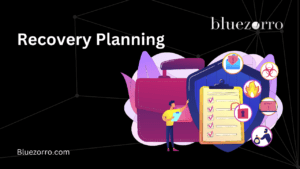Introduction
The world of custom software development is constantly changing, and making sure these programs are secure is more important than ever. As technology gets better, so do the tricks used by cybercriminals to attack them. This article will explain the most important security steps you should take during custom development to protect sensitive information and keep your applications safe.
Understanding the Importance of Security in Custom Development
In the world of custom software development, building security from the very beginning is crucial, not something you can tack on later. This section dives into why making software development security a core priority from the project’s start is essential for creating a strong and dependable application.
Common Security Threats in Custom Development
It’s crucial to understand the comple
x world of security threats to truly strengthen our applications. Whether it’s protecting against data leaks caused by SQL injection attacks or preventing malicious code from running through Cross-Site Scripting (XSS), knowing these threats is the first step in stopping them.
-
SQL Injection Attacks
SQL injection is a prevalent threat. Learn how attackers exploit vulnerabilities and discover ways to prevent unauthorized database access.
-
Cross-Site Scripting (XSS)
Explore the dangers of XSS attacks and how implementing secure coding practices can mitigate this threat effectively.
The Role of Authentication and Authorization
Authentication and authorization are the gatekeepers of secure applications. This section explores the implementation of multi-factor authentication and role-based access control.
-
Implementing Multi-Factor Authentication
Discover the layers of security added by multi-factor authentication and why it is crucial in today’s threat landscape.
-
Role-Based Access Control (RBAC)
Learn how RBAC limits access to authorized users and ensures each user has the appropriate level of access.
Data Encryption Best Practices
Securing data during transmission and storage is non-negotiable. This section discusses SSL/TLS protocols and end-to-end encryption to safeguard sensitive information.
-
SSL/TLS Protocols
Delve into the significance of secure sockets layer (SSL) and transport layer security (TLS) protocols in encrypting data in transit.
-
End-to-End Encryption
Understand how end-to-end encryption protects data from being intercepted or accessed by unauthorized entities.
Secure Coding Practices
The foundation of a secure application lies in the code. This section explores the importance of input validation, code reviews, and testing in developing secure software.
-
Input Validation
Learn why input validation is a critical defense against various types of injection attacks and unexpected user inputs.
-
Code Reviews and Testing
Uncover the role of thorough code reviews and testing in identifying and rectifying vulnerabilities in the development stage.
Regular software development Security Audits and Monitoring
Security is an ongoing process. This section emphasizes the significance of continuous security monitoring, penetration testing, and regular security audits.
-
Continuous Security Monitoring
Explore how continuous monitoring provides real-time insights into potential threats and vulnerabilities.
-
Penetration Testing
Understand the proactive approach of penetration testing in identifying and addressing vulnerabilities before they are exploited.
Security in API Development
APIs play a pivotal role in modern applications. This section discusses securing APIs through mechanisms like OAuth, API keys, and rate limiting.
-
OAuth and API Keys
Learn about the importance of OAuth authentication and API keys in controlling access to APIs.
-
Rate Limiting
Explore how rate limiting prevents abuse and ensures the optimal performance of APIs.
Secure Deployment and Configuration Management
The security journey extends to deployment and configuration. This section highlights secure DevOps practices and container security.
-
Secure DevOps Practices
Discover how integrating security into DevOps practices ensures a secure and streamlined development pipeline.
-
Container Security
Understand the unique security challenges of containerized applications and how to mitigate them effectively.
Keeping Software and Dependencies Updated
Software vulnerabilities can be exploited if left unpatched. This section emphasizes the importance of timely patch management and automated dependency scanning.
-
Importance of Patch Management
Explore why keeping software updated with the latest patches is crucial for closing security loopholes.
-
Automated Dependency Scanning
Discover how automated tools can assist in identifying and addressing vulnerabilities in third-party dependencies.
Employee Training on Security Awareness
Humans are frequently the weakest link in software development security. This section emphasizes the importance of training employees to identify and thwart phishing attempts and social engineering attacks.
-
Phishing Awareness
Learn how educating employees about phishing tactics can prevent unauthorized access and data breaches.
-
Social Engineering Prevention
Explore strategies to empower employees to recognize and resist social engineering attempts.
Incident Response and Recovery Planning
No system is foolproof, and incidents may occur. This section emphasizes the importance of developing an incident response plan and conducting regular drills.
-
Developing an Incident Response Plan
Understand the key elements of a robust incident response plan to minimize the impact of security incidents.
-
Regular Drills and Updates
Discover the role of regular drills and updates in ensuring the effectiveness of the incident response plan.
Legal and Compliance Considerations
-
GDPR and Data Protection
Uncover how the General Data Protection Regulation (GDPR) influences custom development and data protection practices.
-
Industry-Specific Compliance
Explore the unique compliance considerations for industries such as healthcare, finance, and e-commerce.
Collaboration with Security Experts
In the constantly evolving field of cybersecurity, working with specialists is extremely helpful. This section talks about involving ethical hackers and staying updated on new security trends.
-
Engaging Ethical Hacker
-
Staying Informed on Security Trends
Understand the importance of staying updated on the latest security trends and incorporating relevant practices.
Conclusion
To sum up, it’s crucial to incorporate strong software development security measures in custom development. This isn’t merely an option but a requirement. By tackling common threats, giving priority to authentication and authorization, securing data through encryption, following safe coding practices, and staying alert with regular audits, organizations can create robust applications.
For software development, contact bluezorro or reach us on LinkedIn













